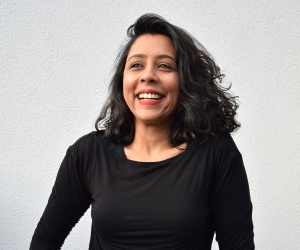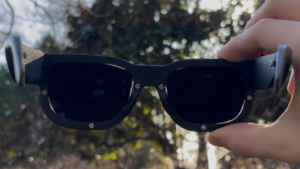Design Academy Eindhoven graduate Shaakira Jassat took to the stage at Design Indaba Conference 2018 with the question: What’s in a cup of tea? Her project, thirTEA for ONE is an installation that shows us the water we don’t see in the average cup of tea. Since then, she’s created two more projects, each looking at the hidden ways we can monitor our water use, find alternative water sources and hopefully, save the precious resource.
Jassat introduced the audience to virtual water with thirTEA for ONE. It’s the sum of all water used in the whole chain of production. So, a cup of tea may require 200ml of water, but how much water went to its production from source to cup? Through her design research, she discovered that a 150ml cup of tea expends 30 litres of water in the entire production process.
At the time of the Conference, Cape Town was, and is still, experiencing severe restrictions on water use. Jassat’s talk took place at the height of the city's worst drought in history. Jassat’s designs seek out ways that we can make small water-saving changes in our daily lives by becoming more cognizant of the wasted water all around us.

Inspired by her personal fascination with water and the need to remind people of its preciousness, Jassat says she “began to harvest my own water from unexpected places in the home and city environment - a steamy shower, condensation from cooking, ice and frost from the cold winter mornings and so on.”
Her research and self-exploration led her to two more projects: Tea Drop and Aquatecture
Tea Drop is a tea machine, which has the ability to condense water vapour from the surrounding atmosphere. It could initiate an alternative for our daily rituals, says Jassat, adding an element of sustainability to our day to day routines.
“It functions on its own time frame, so one has to wait for the tea vessel to be filled up with water, before it can be boiled and ready for making tea,” she explains.
Learning that it takes 30 litres of virtual water to produce one single cup of tea, led Jassat to do field research on tea farms in Asia. There, she discovered that water is a large by-product of processing tea and harvested tea leaves are dependent on the weather and subject to time.
“Tea Drop aims to recapture this precious resource whilst giving power back to the environment,” she says.
In Aquatecture, Jassat questions whether the built environment, particularly our cities, could provide opportunities for resource collection.
“Architecture requires a revolutionary shift towards more responsive ideas to current climatic conditions,” she says.
Aquatecture is a research project which aims to initiate ways to harvest water through “structural elements” or the buildings themselves.
“It consists of a modular panel designed to harvest rainwater,” says Jassat. “When integrated with technology, it has the ability to harvest moisture from the air. Instead of sliding off the surface, the panel permits water to be collected through a punctured, geometric surface.
Aquatecture makes water conservation both visible and engaging.”
Born in South Africa, Shaakira secured a B.Sc. in Interior Architecture at the University of Pretoria, and later moved abroad to further her studies at the Design Academy Eindhoven in the Netherlands. She now lives and works in the Netherlands under her studio, Studio Sway.

Jassat was one of the numerous graduates to speak at Design Indaba Conference. Watch her full talk or see the some of the Global Graduate picks for the 2019 Festival of creativity.











